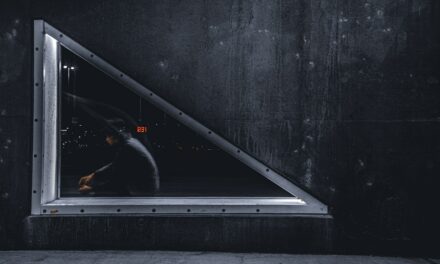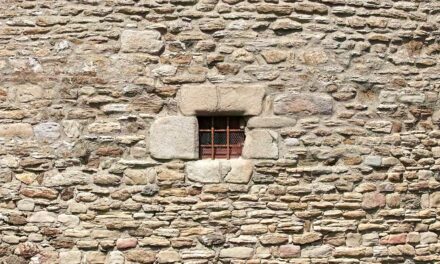Pedro de Campaña, a prominent figure in the Spanish Renaissance, was born in the early 16th century, although the exact date of his birth remains shrouded in mystery. It is widely believed that he hailed from the region of Flanders, which was then part of the Habsburg Netherlands. This geographical origin is significant, as it suggests that Campaña was exposed to the rich artistic traditions of Northern Europe, which would later influence his own work.
His early life is not well-documented, but it is thought that he received a solid education in the arts, likely through apprenticeship under established masters of the time. This formative period would have been crucial in shaping his artistic sensibilities and technical skills. As a young artist, Campaña’s education would have encompassed a variety of disciplines, including drawing, painting, and perhaps even sculpture.
The Renaissance was a time of great innovation and exploration in the arts, and Campaña was undoubtedly influenced by the prevailing trends of his day. His exposure to the works of contemporaries and predecessors would have provided him with a diverse palette of styles and techniques to draw upon. It is during this period that he likely developed his distinctive approach to composition and colour, which would later become hallmarks of his oeuvre.
Summary
- Pedro de Campaña was born in Flanders and received his early artistic training in the Netherlands before moving to Italy.
- Campaña’s style was heavily influenced by Italian Renaissance artists such as Raphael and Michelangelo, as well as the Mannerist style.
- Campaña’s most famous works include religious paintings and altarpieces, which are known for their emotional intensity and dramatic lighting.
- Campaña’s time in Italy had a significant impact on his work, as he adopted the use of oil paint and the Italian Renaissance style of composition and perspective.
- Campaña’s time in Seville was a period of great productivity, where he produced many of his most famous works, including the altarpiece for the Church of Santa Maria and the Descent from the Cross.
Style and Influences
Pedro de Campaña’s style is often characterised by a harmonious blend of Northern European realism and the emerging Baroque sensibilities of the Spanish art scene. His works exhibit a keen attention to detail, particularly in the rendering of fabrics and textures, which can be traced back to the meticulous techniques employed by Flemish painters. This attention to realism is coupled with a dramatic use of light and shadow, a technique that would later be refined by Baroque artists.
Campaña’s ability to capture the human form with both accuracy and emotional depth sets him apart from many of his contemporaries. Influences on Campaña’s work are manifold, with notable inspiration drawn from both Italian Renaissance masters and local Spanish traditions. The works of artists such as Titian and Raphael are evident in his use of colour and composition, while the spiritual intensity found in the works of Spanish painters like El Greco can also be discerned in his religious pieces.
This eclectic mix of influences allowed Campaña to carve out a unique niche within the Spanish art world, where he could synthesise various styles into a cohesive body of work that resonated with both local and international audiences.
The Works of Pedro de Campaña
The oeuvre of Pedro de Campaña is diverse, encompassing religious altarpieces, portraits, and genre scenes that reflect the complexities of 16th-century Spanish society. His altarpieces are particularly noteworthy for their intricate compositions and emotive figures, which often convey profound spiritual narratives. One of his most celebrated works is “The Virgin and Child,” which exemplifies his ability to infuse traditional religious iconography with a sense of warmth and humanity.
The figures are rendered with a tenderness that invites viewers to engage with the divine on a personal level. In addition to his religious works, Campaña also produced a number of portraits that capture the essence of his sitters with remarkable precision. His portraits are characterised by their psychological depth, revealing not just the physical likeness but also the inner lives of his subjects.
This ability to convey character through facial expression and posture is a testament to Campaña’s skill as an observer of human nature. His works often reflect the social hierarchies and cultural dynamics of his time, making them valuable historical documents as well as artistic achievements.
The Influence of Italy on Campaña’s Work
Italy played a pivotal role in shaping Pedro de Campaña’s artistic vision. During the Renaissance, Italy was at the forefront of artistic innovation, and many artists from across Europe sought to study its masters. Campaña’s exposure to Italian art is evident in his use of colour and composition, which often mirrors the techniques employed by renowned Italian painters.
The influence of chiaroscuro—a technique that employs strong contrasts between light and dark—can be seen in many of his works, lending them a dramatic quality that captivates viewers. Moreover, Campaña’s time spent in Italy allowed him to absorb the principles of perspective and anatomical accuracy that were being explored by artists such as Leonardo da Vinci and Michelangelo. These elements are reflected in his ability to create three-dimensional forms on a two-dimensional surface, enhancing the realism of his figures.
The synthesis of Italian techniques with his own Flemish heritage resulted in a distinctive style that set him apart from his contemporaries in Spain.
Campaña’s Time in Seville
Campaña’s career flourished during his time in Seville, a vibrant cultural hub that attracted artists from across Europe. The city was undergoing significant transformation during the 16th century, becoming a centre for trade and artistic exchange. It was here that Campaña established himself as a leading painter, producing works for both religious institutions and private patrons.
His presence in Seville coincided with a burgeoning interest in religious art, driven by the Counter-Reformation’s emphasis on visual storytelling as a means to engage the faithful. In Seville, Campaña collaborated with other artists and craftsmen, further enriching his artistic practice. The city’s diverse population provided him with a wealth of inspiration, as he encountered various cultural influences that informed his work.
His ability to adapt to the local artistic climate while maintaining his unique style allowed him to thrive in this competitive environment. The legacy of his time in Seville is evident in the numerous altarpieces and portraits that continue to be celebrated for their emotional resonance and technical prowess.
The Impact of Religion on Campaña’s Art
Religion played an integral role in shaping Pedro de Campaña’s artistic output. As a painter during the height of the Counter-Reformation, he was acutely aware of the Church’s desire for art that conveyed spiritual truths and moral lessons. His religious works often reflect this mandate, employing vivid imagery and emotive figures to communicate complex theological concepts.
Campaña’s ability to evoke deep feelings through his art made him a sought-after artist for ecclesiastical commissions. The themes present in Campaña’s religious works often revolve around redemption, sacrifice, and divine love. His depictions of saints and biblical figures are imbued with a sense of humanity that resonates with viewers on a personal level.
By portraying these figures with emotional depth and realism, he invites contemplation and reflection on spiritual matters. This focus on human experience within religious contexts distinguishes Campaña’s work from that of many other artists of his time.
Campaña’s Legacy and Influence
Pedro de Campaña’s legacy is one marked by both artistic innovation and cultural significance. His contributions to Spanish art during the Renaissance laid the groundwork for future generations of artists who would continue to explore themes of realism and emotional expression. While he may not be as widely recognised as some of his contemporaries, such as El Greco or Zurbarán, his influence can be traced through their works and those who followed.
In addition to his impact on individual artists, Campaña’s work also contributed to the broader evolution of Spanish painting during this period. His ability to synthesise various influences into a cohesive style helped define what would become known as the Spanish Baroque aesthetic. As art historians continue to study this period, Campaña’s role as a bridge between Northern European traditions and Spanish artistic developments becomes increasingly apparent.
The Techniques and Materials Used by Campaña
Pedro de Campaña employed a range of techniques and materials that were characteristic of Renaissance painting. He primarily worked with oil paints, which allowed for greater flexibility in blending colours and achieving subtle gradations of light and shadow. This medium enabled him to create rich textures and intricate details that brought his subjects to life.
His mastery of oil painting techniques is evident in the way he rendered fabrics, skin tones, and atmospheric effects. In addition to oil paints, Campaña also utilised traditional methods such as underpainting—a technique where an initial layer is applied to establish tonal values before adding colour layers on top. This approach not only enhanced the depth of his works but also contributed to their overall luminosity.
Furthermore, he often employed glazes—thin layers of transparent paint—to achieve a sense of depth and vibrancy in his colour palette. These techniques reflect both his technical skill and his understanding of how materials could be manipulated to achieve desired effects.
Campaña’s Portraiture and Religious Works
The dual focus on portraiture and religious themes within Pedro de Campaña’s oeuvre highlights his versatility as an artist. His portraits are notable for their psychological insight; he had an uncanny ability to capture not just likeness but also character traits through subtle expressions and gestures. This skill made him particularly sought after by patrons who desired not only an accurate representation but also an evocative portrayal that conveyed their status or personality.
Conversely, his religious works are imbued with spiritual significance, often serving as visual narratives that engage viewers on multiple levels. Through careful composition and emotive figures, he created scenes that invite contemplation on faith and morality. The interplay between these two genres within his body of work illustrates not only his technical prowess but also his deep understanding of human experience—both secular and sacred.
Campaña’s Importance in the Spanish Renaissance
Pedro de Campaña occupies a significant place within the context of the Spanish Renaissance due to his unique contributions to both religious art and portraiture. His ability to merge Northern European influences with local traditions resulted in a distinctive style that resonated with audiences during a time when Spain was asserting its cultural identity amidst broader European developments. As an artist who navigated these complex dynamics, Campaña played an essential role in shaping the visual language of Spanish art.
Moreover, his works reflect broader societal changes occurring during this period—particularly the rise of individualism alongside collective religious fervour. By capturing both personal identity through portraiture and communal spirituality through religious themes, Campaña’s art serves as a mirror reflecting the complexities of 16th-century Spanish society.
The Rediscovery and Recognition of Campaña’s Work
In recent years, there has been a renewed interest in Pedro de Campaña’s work among art historians and collectors alike. As scholars delve deeper into the nuances of Spanish Renaissance art, they have begun to recognise Campaña’s contributions as pivotal rather than peripheral within this rich historical context. Exhibitions showcasing his works have emerged across Spain, allowing contemporary audiences to engage with his artistry firsthand.
This rediscovery has not only elevated Campaña’s status within art historical discourse but has also sparked discussions about the broader implications of regional styles during the Renaissance era. As more people become aware of his achievements, it becomes increasingly clear that Pedro de Campaña deserves recognition not just as an artist but as an influential figure who helped shape the trajectory of Spanish art history for generations to come.
For those interested in exploring different artistic techniques, a related article worth checking out is “Advanced Gesture Drawing: Dynamic Poses in Seconds”. This article delves into the intricacies of capturing movement and emotion in art through quick gesture drawings. It provides valuable insights into how artists can bring life and energy to their work. Just as Pedro de Campaña mastered the art of capturing emotion in his paintings, this article offers tips and tricks for artists looking to enhance their own skills in this area.



